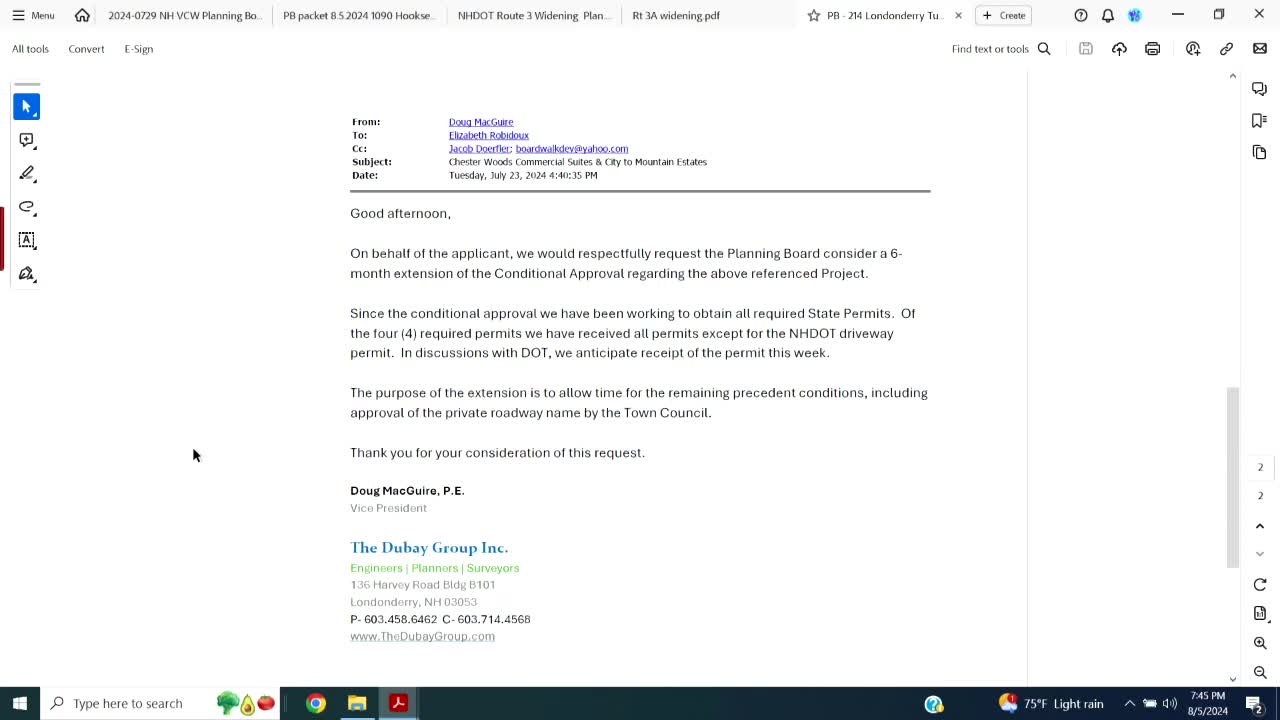Planning Board Debates Controversial Tree Buffer Changes
August 05, 2024 | Hooksett, Merrimack County , New Hampshire

This article was created by AI summarizing key points discussed. AI makes mistakes, so for full details and context, please refer to the video of the full meeting. Please report any errors so we can fix them. Report an error »

In a recent planning board meeting, discussions centered around the amendment of a landscaping plan for the buffer area at 1 and 5 Dartmouth Street. The proposal aimed to replace specified spruce evergreens with a more general category of evergreens, following a miscommunication between the planning office and the designer. The designer had originally specified spruce, which is not a requirement according to the development regulations that only mandate evergreens.
The meeting revealed that the area had been disturbed due to enforcement actions during the COVID-19 pandemic, necessitating the repopulation of the buffer zone. The designer expressed difficulty in sourcing the specified spruce trees and proposed using arborvitae instead, which are easier to find and grow quickly. However, board members raised concerns about the suitability of arborvitae for providing a dense screen, especially in winter conditions.
Public comments highlighted the importance of adhering to buffer zone requirements, with residents advocating for the use of more robust tree species such as pines or firs to ensure adequate visual and sound barriers between commercial and residential properties. One resident, Susan Piche, emphasized that the current plan with arborvitae would not provide the necessary density and called for a reconsideration of the species used.
The board ultimately accepted jurisdiction over the revised buffer restoration plans, moving forward with the public hearing to address community concerns. The discussions underscored the ongoing challenges in balancing development needs with environmental and community standards, particularly in areas transitioning from commercial to residential use.
The meeting revealed that the area had been disturbed due to enforcement actions during the COVID-19 pandemic, necessitating the repopulation of the buffer zone. The designer expressed difficulty in sourcing the specified spruce trees and proposed using arborvitae instead, which are easier to find and grow quickly. However, board members raised concerns about the suitability of arborvitae for providing a dense screen, especially in winter conditions.
Public comments highlighted the importance of adhering to buffer zone requirements, with residents advocating for the use of more robust tree species such as pines or firs to ensure adequate visual and sound barriers between commercial and residential properties. One resident, Susan Piche, emphasized that the current plan with arborvitae would not provide the necessary density and called for a reconsideration of the species used.
The board ultimately accepted jurisdiction over the revised buffer restoration plans, moving forward with the public hearing to address community concerns. The discussions underscored the ongoing challenges in balancing development needs with environmental and community standards, particularly in areas transitioning from commercial to residential use.
View full meeting
This article is based on a recent meeting—watch the full video and explore the complete transcript for deeper insights into the discussion.
View full meeting
